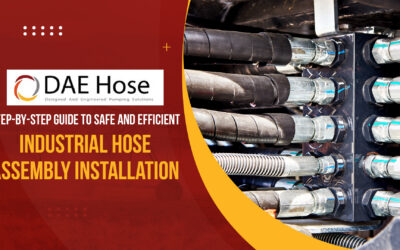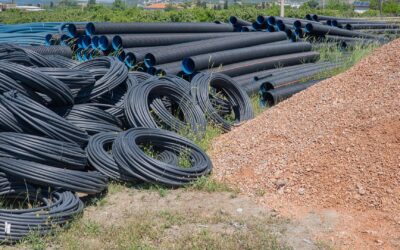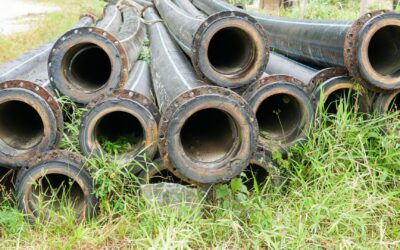Introduction
In the complex world of fuel transport and industrial operations, one component stands out for its indispensable role: the industrial fuel hose. From transferring diesel at bustling shipping yards to refueling aircraft and dispensing gasoline in remote mining areas, the industrial fuel hose ensures uninterrupted operations, safety, and high efficiency across a wide range of sectors.
With a variety of materials, designs, and specifications available, choosing the right industrial hose for your application is more important than ever. Decision-makers must consider everything from fuel type and environmental conditions to hose flexibility and lifespan. Additionally, integrating tools like a fuel hose roller industrial system can further improve efficiency and handling in demanding settings.
This comprehensive guide explores the major types of fuel hoses, outlines their best use cases, and offers practical insights for selecting the most suitable option for your operational needs. Let’s dive into the details of these essential components and how they support the critical infrastructure of modern industry.
1. Overview of Industrial Fuel Hoses
An industrial fuel hose is a flexible and rugged conduit specifically designed to safely transport different types of fuel across a range of demanding environments. These hoses are built to resist harsh chemicals, extreme temperatures, mechanical stress, and abrasive conditions, making them indispensable across many fuel-handling operations.
Industries that commonly depend on this equipment include:
- Mining and construction
- Aviation and aerospace
- Automotive fueling stations
- Oil and gas exploration
- Marine and shipbuilding
- Agricultural machinery fueling
- Emergency response services
Each of these sectors requires fuel transfer solutions tailored to their specific operational challenges. For example, aviation systems require hoses that can handle high-pressure fuel delivery while minimizing the risk of leakage and corrosion. On the other hand, agricultural operations often prioritize hose flexibility and resistance to UV damage due to extended outdoor use.
The industrial fuel hose market meets these varied demands with a wide array of specialized products. Tools like the fuel hose roller industrial system play a crucial role in improving efficiency, particularly in large-scale or mobile fueling scenarios. In addition, rugged hose assemblies designed for fuel hose roller industrial use help reduce wear and extend the service life of equipment subjected to frequent handling.
Choosing the right industrial fuel hose is critical not just for efficiency but also for maintaining safety and regulatory compliance. By matching hose specifications to the job requirements, industries can ensure reliable fuel handling while reducing the likelihood of downtime or operational hazards. Industrial hose configurations are never one-size-fits-all; they are purpose-built tools central to modern fuel logistics.
2. Rubber Fuel Hoses
Rubber fuel hoses remain one of the most commonly used types within the industrial fuel hose category. These hoses are crafted from high-quality synthetic rubber, delivering a combination of flexibility, resilience, and affordability that suits a wide range of medium-duty fuel applications.
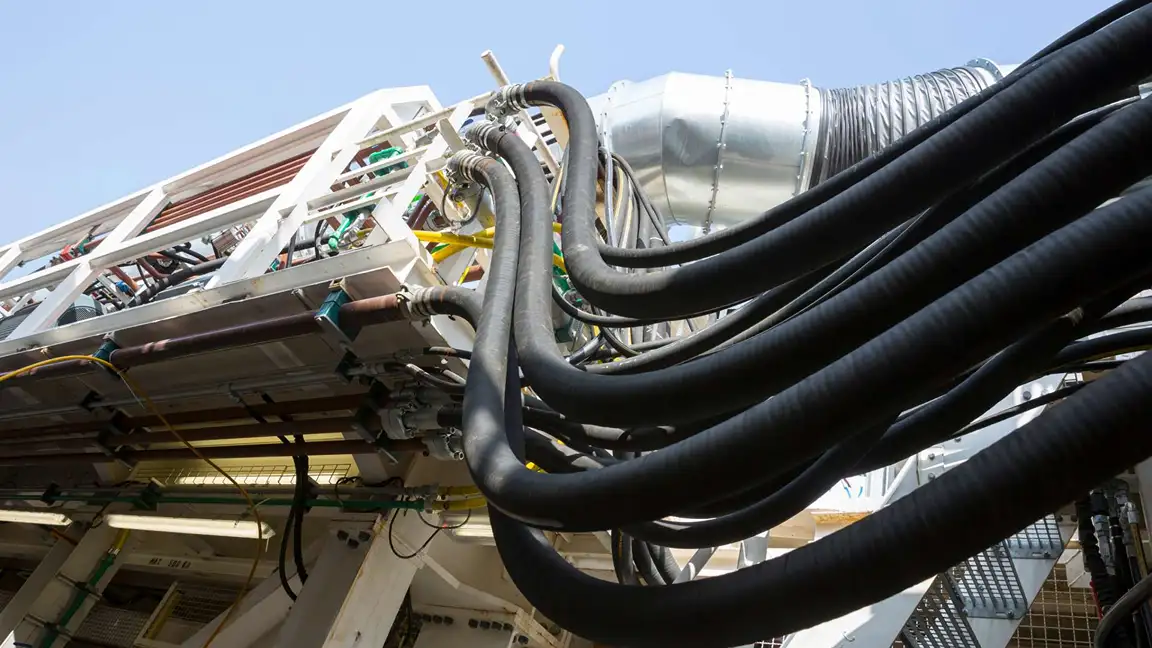
Characteristics:
- Excellent elasticity and adaptability for routing
- Strong resistance to abrasion and physical wear
- Cost-effective option for various fuel transport needs
- Simple installation and straightforward replacement
Limitations:
- Less suitable for environments with extremely high temperatures or pressures
- Prolonged UV exposure can gradually degrade material integrity
Best Use Cases:
- Fuel dispensing for gasoline and diesel at commercial stations
- Refueling operations for agricultural machinery like tractors and harvesters
- Temporary setups at construction sites require mobile fuel access
Rubber hoses are particularly compatible with fuel hose roller industrial systems, where flexibility and ease of handling are essential. Whether used in a mobile application or mounted on a fuel hose roller industrial reel, these hoses offer practical advantages in terms of maneuverability and storage.
Despite their affordability, rubber fuel hoses still meet the durability expectations required in an industrial hose, especially when matched correctly to environmental and operational demands. In scenarios where the conditions are moderate, rubber hoses serve as a reliable industrial fuel hose solution that balances performance with cost-efficiency.
3. Thermoplastic Fuel Hoses
Thermoplastic fuel hoses are crafted from plastic polymers and are widely recognized for their lightweight design and excellent chemical resistance. As a category within the broader industrial hose market, they are particularly valuable in applications that demand flexibility, easy handling, and strong adaptability to temperature variations. Their versatile performance makes them a reliable option for many light- to medium-duty fuel transfer operations.
Characteristics:
- Lightweight and easy to maneuver
- Strong resistance to chemical corrosion
- Well-suited for compact or restricted installations
- Maintains flexibility in colder climates without cracking
Limitations:
- Offers less abrasion resistance compared to rubber alternatives
- May need external protection in rugged or abrasive settings
Ideal Applications:
- Automotive and small engine fuel systems
- Portable fueling equipment, like lawn and garden machines
- Light-duty industrial heating oil delivery systems
Thermoplastic hoses fill a crucial role in mobile or confined fuel delivery setups. As part of a comprehensive industrial fuel hose solution, these hoses offer versatility for applications that prioritize convenience and corrosion resistance over heavy-duty toughness.
4. Stainless Steel Braided Fuel Hoses
In demanding environments where heat, pressure, and safety are critical concerns, stainless steel braided fuel hoses stand out as a premium choice. These industrial fuel hoses are engineered with a robust inner lining—typically rubber or PTFE—encased in a tightly woven stainless steel braid that enhances structural integrity.
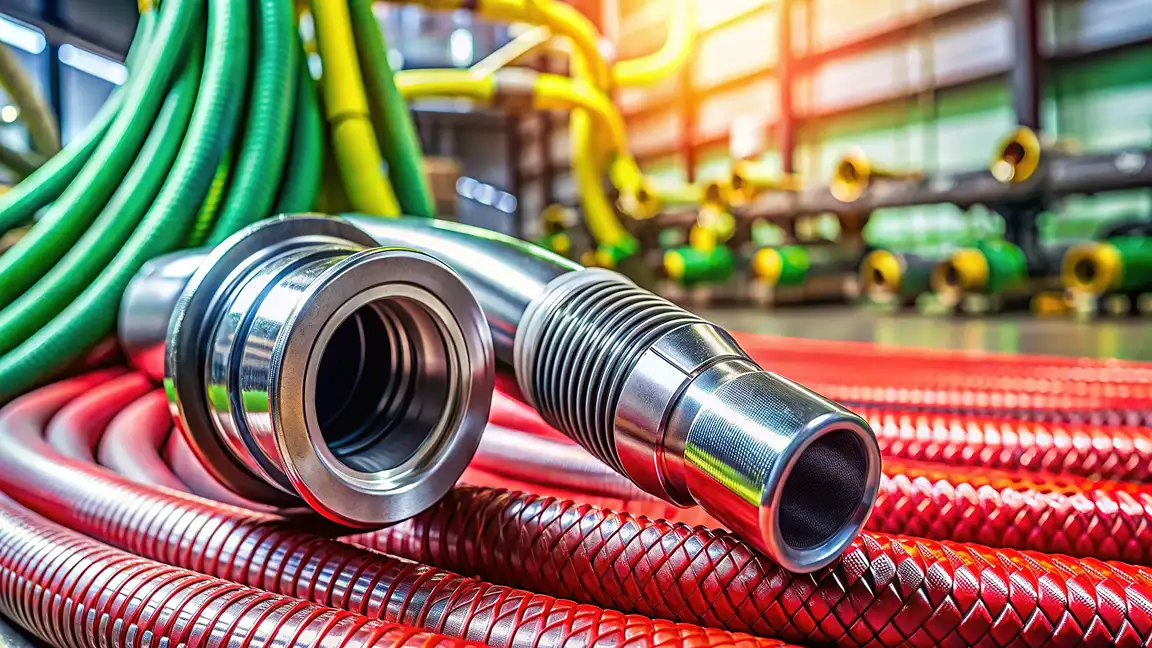
Key Features:
- Outstanding resistance to extreme temperatures and high pressure
- Excellent protection against corrosion, abrasion, and fire hazards
- Reinforced design that ensures long-term durability in challenging conditions
Common Limitations:
- Significantly higher cost compared to rubber or composite alternatives
- Less flexible and heavier, which may limit use in confined or mobile setups
Best Use Scenarios:
- Refueling operations at marine fueling stations
- Aircraft fuel transfer systems require maximum safety
- Petrochemical plants handling volatile substances
- High-performance engines in industrial and racing environments
These hoses are ideal where an industrial fuel hose must deliver unmatched resilience and minimal risk of failure. While they may not be the most cost-effective solution, their high tolerance and longevity make them the preferred choice in mission-critical applications.
As a specialized form of industrial hose, stainless steel braided variants prioritize performance over convenience. When durability and safety are paramount, this type of industrial fuel hose ensures both operational reliability and regulatory compliance under extreme conditions.
5. Composite Fuel Hoses
Composite fuel hoses are engineered using multiple layers of thermoplastics, fabrics, and internal metal wires. This multi-layer construction gives them a unique combination of flexibility, durability, and chemical resistance, making them a preferred choice in several high-demand industries. As a type of industrial fuel hose, they are especially suited for bulk fuel transfer operations where strength and adaptability are essential.
Characteristics:
- Lightweight design allows for easier handling
- Exceptional flexibility, even in colder temperatures
- Suitable for aggressive fuels, solvents, and chemicals
- Available in anti-static configurations for added safety
Limitations:
- May require specialized couplings or fittings
- Typically demand more maintenance than rubber or metal hoses
Application Areas:
- Bulk fuel transfer at industrial terminals
- Hose lines for tanker truck loading and unloading
- Large-scale fuel delivery in the marine and aviation sectors
Composite hoses are particularly valuable when managing challenging fuels or volatile chemicals. Their construction ensures performance while maintaining ease of use in various demanding environments. Whether supporting a mobile fueling platform or a stationary depot, these hoses are often paired with an industrial fuel hose system for optimized safety and reliability.
In industrial settings where long-distance transfer and chemical compatibility are essential, combining composite options with an appropriate industrial hose setup ensures operational continuity. The use of a fuel hose roller industrial system further improves handling efficiency, reducing wear and tear during daily operations.
6. Specialty Hoses: Anti-Static and Vapor Recovery
In many tightly regulated sectors, managing static electricity and controlling vapor emissions are essential safety concerns. Specialty solutions such as anti-static hoses and vapor recovery systems are critical components within the industrial fuel hose category. These engineered hose types are specifically developed to mitigate risks in flammable or environmentally sensitive environments.
Anti-static variants of the industrial fuel hose are equipped with features like an integrated grounding wire or carbon-lined construction. These features work to safely dissipate static charges, which can otherwise trigger sparks and fires in volatile areas.
- Prevent static discharge in flammable settings
- Widely used in aviation, petrochemical refineries, and fuel distribution depots
- Essential for operations where fuel hose roller industrial equipment is employed for fast and safe transfer
Another specialized industrial hose type is the vapor recovery hose. These are designed with dual-layer barriers that trap and contain fuel vapors during the dispensing process. This not only protects workers but also helps facilities comply with strict environmental regulations.
- Ensures reduced vapor emissions in transfer systems
- Commonly found in fuel stations and mobile refueling trucks
- Often paired with fuel hose roller industrial setups to maximize efficiency and containment
By incorporating these specialty hoses into fueling infrastructure, industries not only enhance workplace safety but also contribute to environmental preservation. Whether integrated into fixed systems or mobile units, these advanced forms of the industrial hose are indispensable in high-risk applications.
7. Using a Fuel Hose Roller in Industrial Settings
A fuel hose roller industrial system enhances safety and efficiency in fuel handling operations. It supports and guides hose movement, especially where hoses are long or frequently used. Minimizing wear and operator strain, it helps extend the life of the industrial fuel hose.
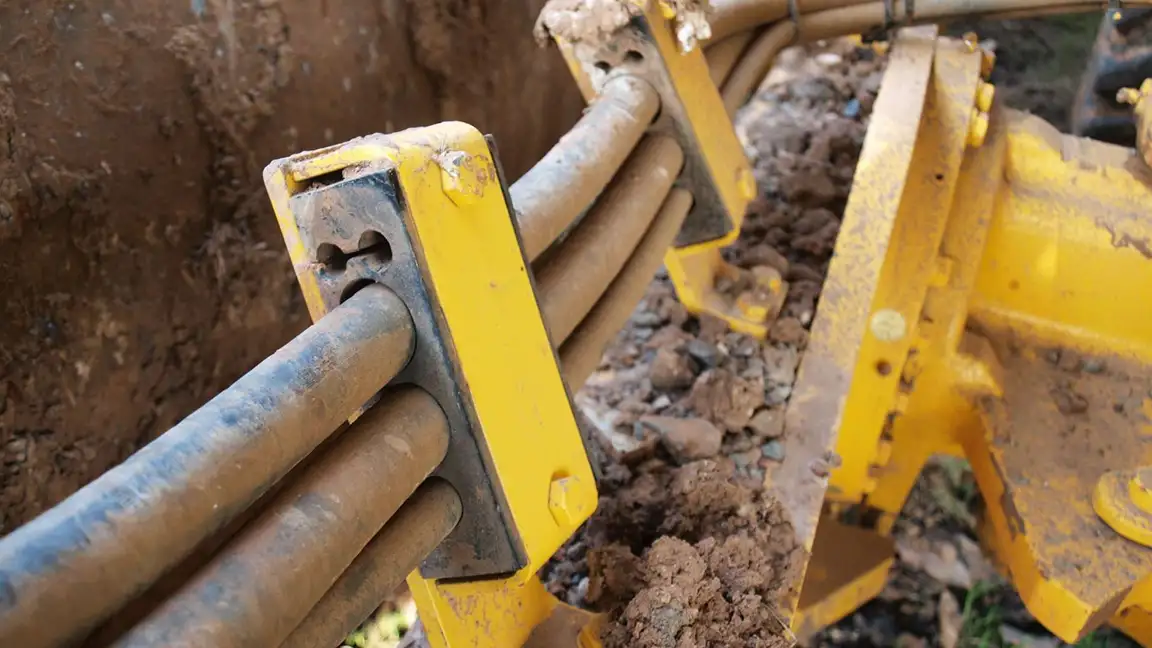
Benefits of Hose Rollers:
- Significantly reduce manual effort and fatigue
- Prevent hose kinking, tangling, and premature wear
- Enhance workplace safety by keeping pathways clear
- Prolong the lifespan of each industrial fuel hose through better handling and storage
Where They’re Used:
- Large-scale aviation hangars and airport tarmacs
- Oil and gas platforms in offshore and onshore settings
- Remote or rugged fuel distribution stations
- Fuel depots with extensive or mobile dispensing operations
Incorporating a fuel hose roller industrial unit ensures smoother and safer operation wherever industrial fuel is dispensed. These systems also contribute to better inventory control and reduced downtime by protecting every industrial fuel hose from harsh mechanical stress.
In demanding environments, using the right industrial hose with proper hose management improves reliability and efficiency. A quality roller boosts safety and streamlines refueling.
8. How to Select the Right Hose for Your Operation
Choosing the right industrial fuel hose starts with clearly understanding your specific operational requirements. Here are some critical selection criteria:
1. Fuel Type:
Different fuels (diesel, gasoline, ethanol blends, aviation fuel) interact differently with hose materials. Always match the hose composition to the fuel type.
2. Temperature and Pressure:
Check the maximum and minimum temperatures your hoses will be exposed to and ensure the pressure rating exceeds operational requirements.
3. Flexibility and Bend Radius:
Tight spaces require hoses with high flexibility and a small bend radius. Consider your installation environment.
4. Hose Length:
Longer hoses may need a fuel hose roller industrial system to prevent damage during use.
5. Regulatory Compliance:
Make sure your hose meets required standards such as SAE, ISO, UL, or other industry-specific certifications.
6. Abrasion and UV Resistance:
For outdoor and heavy-duty environments, look for rugged hoses that can withstand physical and environmental wear.
Consulting with a reliable supplier or engineer can ensure the right fit and reduce the risk of costly errors.
9. Best Practices for Maintenance and Safety
To maximize the lifespan and performance of your industrial fuel hose, follow these key maintenance and safety practices:
Inspection Schedule:
- Perform daily visual inspections for cracks, blisters, or leaks.
- Schedule detailed monthly and quarterly inspections.
Cleaning:
- Flush hoses with a compatible solvent if fuel has been sitting stagnant.
- Clean connectors to prevent corrosion.
Storage:
- Use hose reels or fuel hose roller industrial systems to store hoses neatly.
- Avoid prolonged exposure to direct sunlight or high temperatures unless UV-protected.
Replacement Guidelines:
- Replace hoses that show signs of excessive wear, softness, or delamination.
- Maintain a documented replacement cycle based on usage intensity.
Maintaining your industrial hose not only reduces downtime but also ensures the safety of operators and the environment.
Conclusion
In today’s high-demand industrial sectors, selecting the right industrial hose, especially when dealing with fuel handling, plays a vital role in maintaining operational safety, efficiency, and compliance. Choosing an appropriate industrial fuel hose is critical, as the wrong selection can lead to costly downtime, safety risks, and performance issues.
Each type of industrial fuel hose, from rubber to composite and stainless steel braided options, offers unique strengths suited to specific applications. Understanding these differences enables teams to make informed choices that enhance durability and reliability in fuel transfer operations. Integrating complementary tools, such as a fuel hose roller industrial system, can further improve hose longevity and help reduce handling strain in high-volume environments.
As regulatory demands increase and operational complexity grows, investing in the correct industrial fuel hose and implementing proper maintenance practices is essential. With the right equipment and support systems in place, organizations can ensure seamless, safe, and efficient fuel transfer across a wide range of industrial applications.


